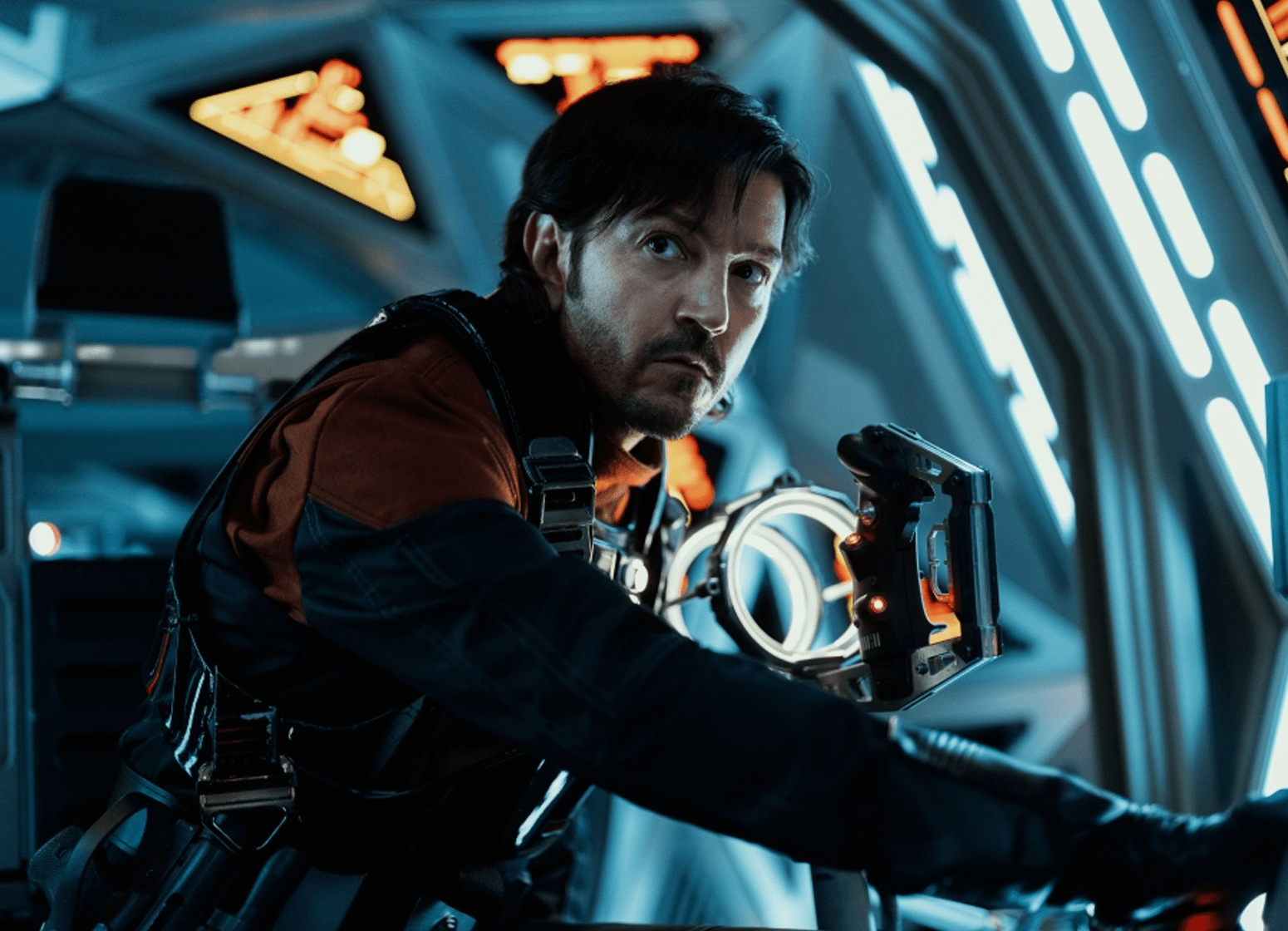“Inside Andor Season 2: Death Star Secrets, Droid Comebacks & A Giant Field of Space Rye”
The Rebellion is back — and so is the magic behind Andor. As Andor Season 2 gears up to complete the bridge to Rogue One: A Star Wars Story, visual effects supervisor Mohen Leo gives us a peek behind the curtain. What he reveals is less Jedi mind trick and more a masterclass in practical and digital wizardry.

Set across four years, each three-episode arc inches us closer to the explosive start of Rogue One. “By the end, you’re basically at the doorstep of that film,” Leo explains. This season doesn’t just revisit the grungy corridors and tense politics of the galaxy — it expands it in bold new directions.
A Droid We Know and Love
Yes, that droid is back. Fans of Rogue One will be thrilled to see the origins of Cassian Andor’s sarcastic and loveable droid companion, K-2SO. “Seeing Alan Tudyk and Diego Luna back together — the chemistry instantly returned,” says Leo. Capturing every twitch, quip, and sarcastic eyebrow raise digitally was no small feat, but the result? Droid gold.
And don’t worry, B2EMO — the wheeled little mech from Season 1 — rolls back into action, still powered by brilliant practical creature effects. “We didn’t have to touch it,” Leo beams. “The creature department nailed it again.”
Coruscant for the Common Folk
Andor continues its tradition of pulling back the curtain on life beyond Jedi temples and Death Star plans. This season, Coruscant isn’t just a political backdrop; it’s a fully realized urban sprawl. “We wanted to show you a Coruscant where people ride public transit, go shopping, live real lives,” Leo shares.
To achieve that gritty realism, the team blended VFX with real-world locations, filming in London and Spain to create a layered, lived-in version of the galactic capital. “It made the city feel bigger, more authentic,” he says.
A Field of Dreams — And Explosions
Among the most visually stunning sequences? A giant action set piece on the grain planet Mina-Rau. Picture a rye field the size of several football pitches — yes, real rye planted six months in advance just for this show. “It was crazy,” Leo laughs. “We could shoot practically inside that field, but no fire effects — unless we wanted to burn it all down.”
Instead, explosions were dirt and smoke. Fire was added digitally, proving once again that sometimes it’s what you don’t burn that matters most.
Ships, Skunks & Starfighters
Season 2 opens with a bang — a heist involving a prototype TIE fighter that feels straight out of a James Bond cold open. Designed with the art department as a “skunk works” project, the ship was built full-size for on-set scenes. “I got to sit in it!” Leo admits like a giddy fan. “We shot everything static practically. Once it takes off — that’s CG magic.”
The season boasts over 4,000 VFX shots. Returning vendors like ILM, Hybride, Soho VFX, and Scanline handled everything from Chandrila’s Montserrat-inspired landscapes to the skies above Coruscant. And yes, the Death Star looms large. “We’re earlier in the timeline than Rogue One, so the station is almost, but not quite, complete,” Leo teases.
Bigger Scope, Same Schedule
Despite the series growing in ambition, production timelines didn’t budge. “We had to do more in the same time,” Leo says. “But having that trust with Tony Gilroy and the returning team made it possible. We were more confident, more daring.”
And it shows. Andor Season 2 isn’t just a sci-fi sequel — it’s a visual feast that builds on the grit and realism that made Season 1 so beloved.
Final Thoughts
From rye fields to rebellious droids and political intrigue, Andor Season 2 doubles down on what makes Star Wars resonate: grounded storytelling, layered characters, and jaw-dropping visuals. As the galaxy inches closer to war, it’s clear that Andor is not just a prequel — it’s prestige television in space armor.










